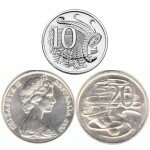Hemp seed as a nutritional resource
The seed of Cannabis sativa L. has been an important source of nutrition for thousands of years in Old World cultures. Non-drug varieties of Cannabis, commonly referred to as hemp, have not been studied extensively for their nutritional potential in recent years, nor has hemp seed been utilized to any great extent by the industrial processes and food markets that have developed during the 20th century.
Technically a nut, hemp seed typically contains over 30% oil and about 25% protein, with considerable amounts of dietary fibre, vitamins and minerals.
Hemp seed oil is over 80% in polyunsaturated fatty acids (PUFAs), and is an exceptionally rich source of the two essential fatty acids (EFAs) linoleic acid (18:2 omega-6) and alpha-linolenic acid (18:3 omega-3).
The omega-6 to omega-3 ratio (n6/n3) in hemp seed oil is normally between 2:1 and 3:1, which is considered to be optimal for human health. In addition, the biological metabolites of the two EFAs, gamma-linolenic acid (18:3 omega-6; ‘GLA’) and stearidonic acid (18:4 omega-3; ‘SDA’), are also present in hemp seed oil.
The two main proteins in hemp seed are edestin and albumin. Both of these high-quality storage proteins are easily digested and contain nutritionally significant amounts of all essential amino acids. In addition, hemp seed has exceptionally high levels of the amino acid arginine.
Hemp seed has been used to treat various disorders for thousands of years in traditional oriental medicine. Recent clinical trials have identified hemp seed oil as a functional food, and animal feeding studies demonstrate the long-standing utility of hemp seed as an important food resource.
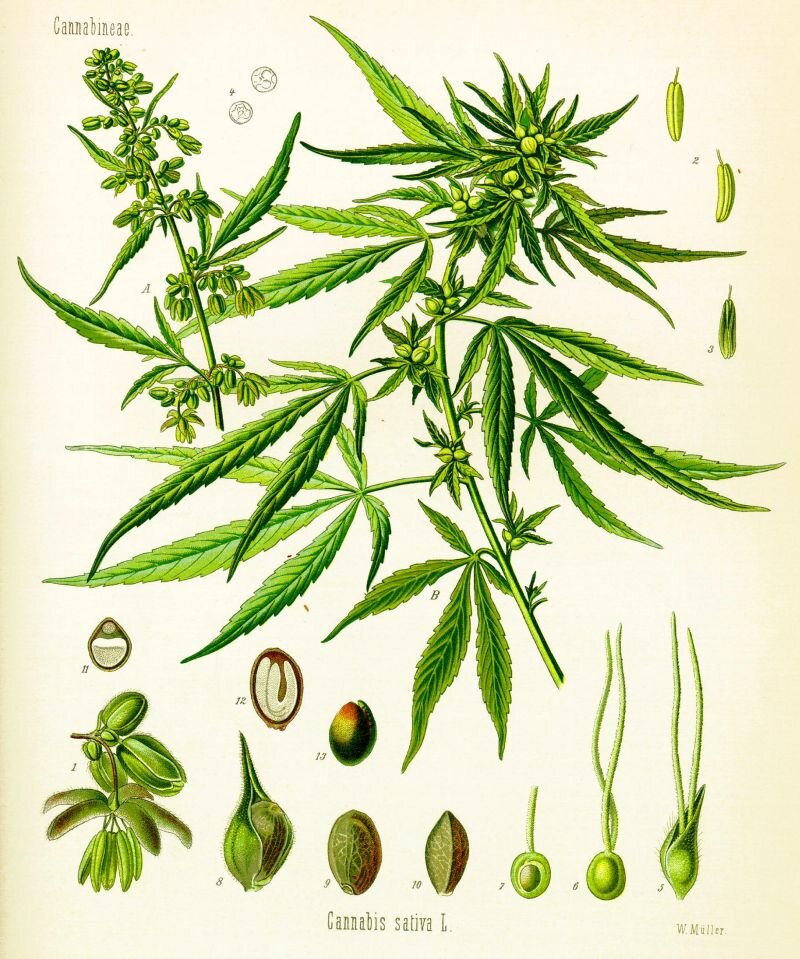
Abbreviations: AL: alpha-Linolenic acid (18:3 omega-3); GLA: gamma-Linolenic acid (18:3 omega-6); EFA: Essential fatty acid; LDL: Low density lipoprotein; n6/n3: Ratio of omega-6/omega-3 fatty acids; PUFAs: Polyunsaturated fatty acids; SDA: Stearidonic acid (18:4 omega-3); THC: delta-9-Tetrahydrocannabinol
Cannabis sativa L.
It has been an important source of food, fibre and medicine for thousands of years. The bast fibre from the stalk is still used in the modern production of durable fabrics and special papers in some countries; e.g., as canvas, linen, tea bags, paper money, cigarette papers and other strong, thin papers that are used to make thick books, such as the Holy Bible. Both the ripened seed of hemp and seed meal are excellent sources of dietary oil, fibre and protein.
Seed-eating migratory birds and rodents are especially attracted to hemp fields at harvest time, which in turn attract raptors and other predatory animals. Eaten raw, or after long-term storage, this common seed was certainly used by prehistoric humans, and probably earlier hominids as well. This is both logical and in line with the prehistoric use of Cannabis as an important source of economic plant fibre in the fabrication of nets, for catching birds and other small animals, in addition to the medical potential of useful cannabinoids in the leaves and flowers of the plant itself. Hemp seed has been documented as a source of food throughout recorded history – raw, cooked or roasted, and hemp seed oil has been used as a food/medicine in China for at least 3000 years.
Table one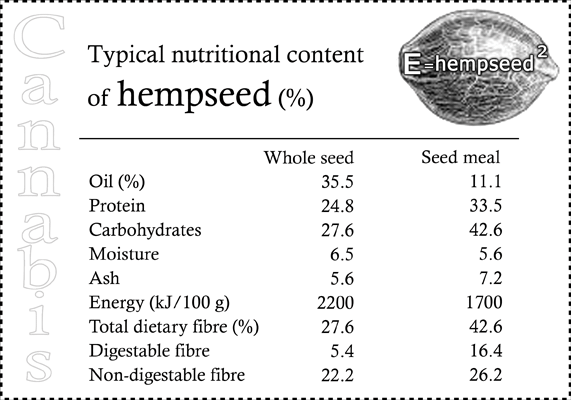
The seed both crushed and whole, remains an important grain in traditional Asiatic foods and medicines. In North America, hemp seed has been used in the paint and varnish industries and imported as bird food. Within the last 10 years, hemp seed has been legally used as food for humans in both Canada and the United States, while the cultivation of hemp remains illegal in the latter.
Recent historical considerations
At over 90% in unsaturated fatty acids (Table 2), hemp seed oil once rivalled linseed (Linum usitatissi- mum L.) as a drying oil in paints, varnishes and other technical coatings.
Hemp seed was eventually replaced by linseed in the late 1930s, after a prohibition of the cultivation of all Cannabis varieties was affected in North America. Subsequently, the potential use and development of hemp seed as a food for humans and domesticated animals was interrupted, and available seed in the west was restricted to the propagation of a few fibre varieties for the production of speciality papers in some European countries for the remainder of the 20th century, notably France. This is an important historical note, for without hemp fibre and pulp from a western source, the United States would have been dependent on Chinese or Russian sources for hemp pulp during the Cold War to make strategically important papers.
Onset of the Second World War quickly brought hemp production back to North America, but only until it could be replaced by other durable natural fibres, such as Manila hemp (i.e., ‘abaca’, Musa textiles). By the 1950s, petroleum-based fibres had captured most of the hemp fibres market in North America. By the 1960s, long bast fibres were no longer in great demand for the production of ropes, textiles and related products in Europe and other parts of the world as cheaper petroleum products began to capture a majority of the market share for such durable goods. Thus, with its limited availability, hemp seed was not exposed to 20th century farming, food processing or marketing.

Hemp seed as food
For various reasons, hemp has been reconsidered as a valuable industrial crop for both food and fibre in Canada and European countries during the last decade. As a result, hemp seed and hemp seed food products have become available to the general public in these countries. While the human food potential for hemp seed has not yet entered mass markets in the west, its nutritional properties have long been recognized and valued as food for both humans and domesticated animals throughout Asia, India, Russia and Eastern Europe. In China, roasted hemp seed is still sold as snacks by street vendors. In Russia, ‘black’ oil has been pressed from hemp seed and used as a substitute for more expensive (and less healthy) sources of dietary fat, such as butter and hydrogenated margarines.
The natural dark colour of hemp seed oil is from chlorophyll within the mature seed, which can hasten auto-oxidation of oil that is exposed to light. Some traditional hemp seed foods can still be found in the Baltic States, particularly Latvia, and in other east European countries. Such a long history and a variety of uses over a large geographic area, and throughout so many different cultures, are all strong reminders of hemp seed’s utility as a useful source of nutrition. Over the past few years, modern science has finally begun to catch up with this ancient knowledge through its own methodologies.
Materials and methods
The data presented in Table 1 were derived experimentally from whole seed of the Finola hemp variety and its seed meal after ‘cold’ (45 ?C) oil pressing. These analytical results were obtained by accredited methods from the Regional Environmental Laboratory of Kuopio, Finland. The data in Table 2 were derived experimentally from commercial oil samples or crushed whole seed as previously described. Amino acid values for hemp seed (cv Finola) and rapeseed in Table 3 were derived experimentally at MTT (the National Agricultural Laboratories in Jokionen, Finland). Other amino acid values in Table 3 were obtained from an authoritative literary source (Scherz et al., 1986).
The nutritional values in Table 4 were also derived experimentally from the Finola variety of hemp seed at MTT in Jokioinen, Finland. The histogram in Figure 1 was complied from relevant data in Table 3, after normalizing all protein values to100%for direct comparison. Individual amino acids in Figure 1 are represented by their IUPAC abbreviations.

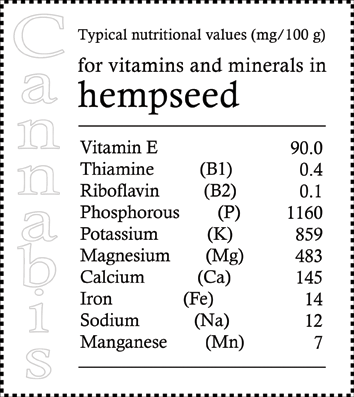
The Finola variety of hemp
Finola is the official denomination for a Finnish variety of hemp that was finally accepted as an EU cultivar in 2004, and was already accepted in Canada by 1998. It is especially well adapted for seed production in northern climes. The origins and other useful aspects of this new variety have already been described elsewhere.
Compared to other varieties of hemp, Finola is relatively short (ca. 1.5 m at maturity), frost tolerant at all stages of growth (down to -5 ?C), drought tolerant and early maturing (typically within 115 days). The short stature of Finola allows for harvest with modern agricultural machines, like other grains. Finola is an open pollinated dioecious crop, with and even balance of male and female plants, and demonstrates little to no branching under normal conditions. Unlike other varieties of hemp, the bast fibre of Finola is almost entirely composed of long, primary fibres, and similar to flax in finesse. Finola produces more seed than any other hemp variety to date, and does not require herbicides or pesticides.
Independent agricultural trials have measured yields to be over 2000 kg of seed per hectare under good agronomic conditions. The protein content and amino acid profile of Finola is not significantly different from other varieties of hemp, but the fatty acid profile has considerably more GLA and SDA than other varieties.
The level of delta-9-tetrahydrocannabinoid (THC) for Finola is well below the EU level of 0.2%, with average values between 0.10–0.15% dry weight of mature plants. The ratio of cannabidiol (CBD) to THC is well over 2 for Finola, which is another requirement for all approved varieties of hemp in the EU.
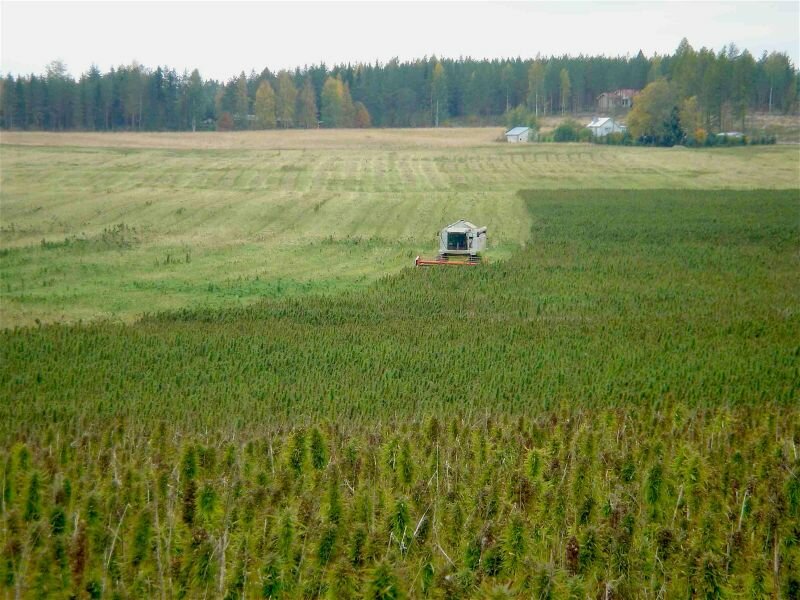
Harvesting Finola
Hemp seed oil
The recent availability and use of hemp seed oil in Europe and North America has fostered anecdotal stories on improvements in health, over a wide range of acute and chronic conditions; e.g., from the rapid healing of simple cuts and burns to influenza, various skin problems, other allergic symptoms and inflammatory diseases. Most, if not all, of these claims can be understood by considering the unique fatty acid profile of hemp seed oil, and its direct impact on the subsequent metabolism of dietary essential fatty acids (EFAs) to eicosanoids, which include prostaglandins and other important metabolites (Table 2). Eicosanoids have been implicated in chronic disease states of the human immune system. The difference in the fatty acid profiles between oil hemp seed and fiber hemp seed has already been reported.
The EFAs are fatty acids that cannot be made by humans and must be obtained through the diet. Their fundamental importance in the human diet was already recognized by the 1930s. Thus, dietary supplementation with oils that contain high levels of EFAs and other polyunsaturated fatty acids (PUFAs) certainly can be used to enhance human health and development, especially when they are lacking in the diet. PUFAs are also incorporated more directly as phospholipids in cellular and organelle membranes. The incorporation of PUFAs in the formation of membrane phospholipid bi-layers is essential for maintaining vital characteristics of cell membrane fluidity, especially in the construction of neuronal membranes within the central nervous system.
Dietary PUFAs and their biologic metabolites can favourably influence the fatty acid profile in low-density lipoproteins (LDL) when compared to saturated fats in the diet, which are strongly associated with coronary heart disease. Thus, a diet that has sufficient levels of PUFAs can lower both arterial levels of LDL-cholesterol and blood pressure in humans. PUFAs also increase bleeding times by decreasing platelet aggregation, which results in decreased peripheral blood pressure and clot formation.
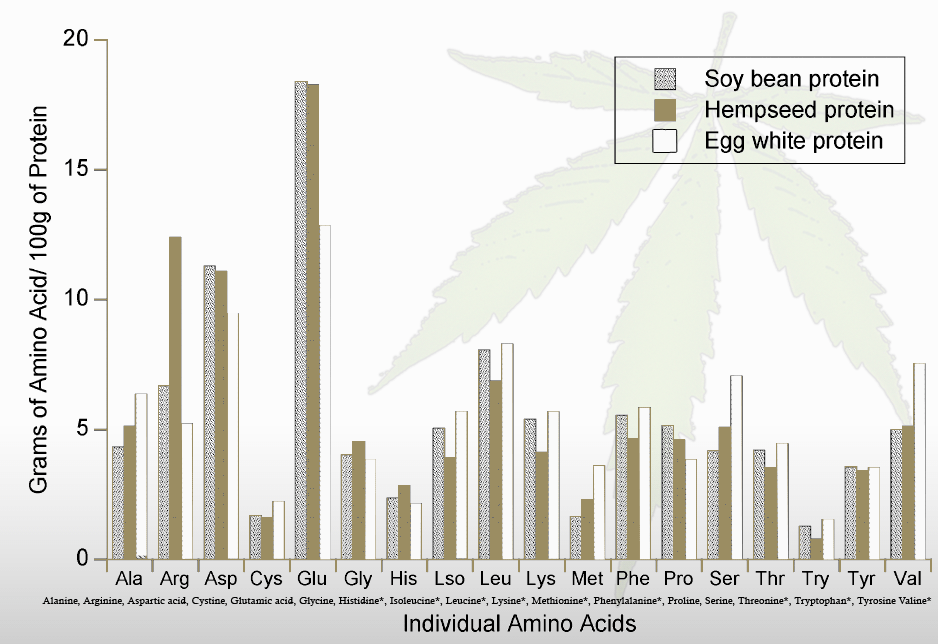
Figure 1. Graphical representation of protein amino acid profiles for soy bean, hemp seed (cv Finola) and egg white. Individual amino acids are represented by their IUPAC abbreviations.
Hemp seed protein and other nutrients
Albumin, a globular protein, and edestin, a legumin, are the two main proteins in hemp seed and both are rich in the amino acids that are essential to human health (Table 3). A direct comparison of protein amino acid profiles from egg white, hemp seed and soy bean shows that hemp seed protein is comparable to these other high quality proteins (Figure 1). Hemp seed protein has good amounts of the sulphur-containing amino acids methionine and cystine, in addition to very high levels of arginine and glutamic acid (Table 3). As an industrial source of vegetable nutrition, both hemp seed and hemp seed meals are rich sources of protein and polyunsaturated oils, in addition to considerable amounts of vitamins and useful minerals (Table 4).
The individual tocopherols in hemp seed (cv Finola), presented as vitamin E in Table 4, are alpha-tocopherol (5 mg/100 g) and gamma-tocopherol (85 mg/100 g), for a total of 90 mg/100 g of vitamin E. These levels are considerably higher than those reported for any other varieties of hemp.
Hemp seed oil
The seed oil of Cannabis sativa L. is typically over 90% in unsaturated fats. Hemp seed oil, pressed from non-drug varieties of the Cannabis seed, is an especially rich source of the two EFAs, linoleic acid (18:2 omega-6) and alpha-linolenic acid (18:3 omega-3), in addition to their respective biologic metabolites, gamma-linolenic acid (18:3 omega-6, ‘GLA’) and stearidonic acid (18:4 omega-3, ‘SDA’).
Metabolism of dietary fatty acids
Due to metabolic competition between the two EFAs for access to the enzyme delta-6 desaturase (Gerster, 1988), the significance of a dietary ratio for the intakes of omega-6 and omega-3 fatty acids is important to consider in health and in the interpretation of results from clinical studies.
Earlier, an optimal omega-6/omega-3 (n6/n3) ratio was considered to be somewhere between 5:1 and 10:1 (WHO & FAO, 1995), which is similar to the ratio found in soy bean oil (about 7:1).
More recent considerations suggest an optimal n6/n3 balance to be somewhere between 2:1 and 3:1, which reflects the ratio found in the traditional Japanese and Mediterranean diets, where the incidence of coronary heart disease has been historically low. The n6/n3 ratio in most commercial hemp seed oils is typically near 2.5:1.
An excess of dietary alpha-linolenic acid (omega- 3), for example, can disturb the metabolic balance by leaving a net deficit of omega-6 metabolites. The presence of both GLA and SDA in hemp seed oil, typically at a favourable n6/n3 ratio of 2:1 (Table 2) allows this enzymatic step with delta-6-desaturase to be efficiently bypassed. The same rationale has been applied to rapeseed oil (Brassica napus), which has a n6/n3 ratio of about 2:1.
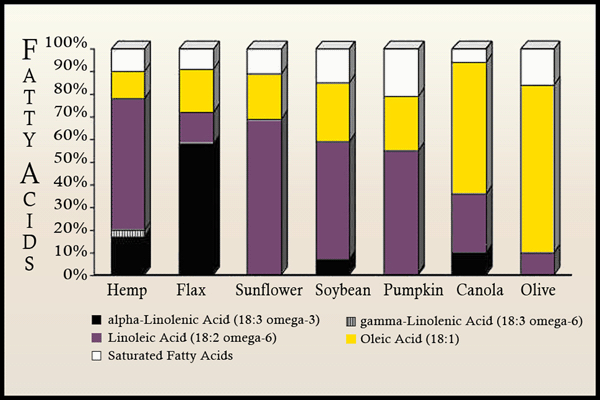
Empirical and clinical studies on hemp seed oil
The system of traditional Chinese medicine maintains the oldest recorded source of information on hemp seed, both as a traditional food and medicine. In recent times, porridge of oats and hemp seed was used as an important source of nutrition in the Czech Republic, and at least one published report has described the application of hemp seed porridge, from folk medicine, in the treatment of tuberculosis without antibiotics.
More recent evidence has described how dietary fatty acids can be used in the treatment of this particular disease.
During the last decade, hemp seed oil has become available in speciality food shops throughout Europe and North America. Anecdotal reports attribute improvements in skin quality, stronger finger nails and thicker hair to modest daily usage (ca. 15–30 ml/day) over time; e.g., improvements in skin quality: 2–4 weeks, nails: 2–4 months and hair: 6–8 months. In both allopathic and traditional forms of medicine, such improvements are considered as good indications of general health. A recent clinical study with topically applied hemp seed oil has already demonstrated its usefulness in healing mucosal skin wounds after eye, nose and throat surgery. This finding is in line with numerous other clinical studies that have demonstrated the utility of EFAs and other PUFAs in healing and immune response.
The fatty acid profile of hemp seed oil is remarkably similar to that of black currant seed oil, which also seems to have a beneficial impact on immunologic vigor (Wu et al., 1999; Barre, 2001). Borage, which is rich in GLA, but totally lacking in omega-3 PUFAs, is fairly well tolerated as a source of this fatty acid, but perhaps more than just GLA is required in some disease states, such as atopy. In a randomized, crossover study that compared hemp seed oil and olive oil, improvements were seen in a population of patients with atopic dermatitis (eczema) within eight weeks after the ingestion of hemp seed oil at 30 ml (2 tbs)/day (Callaway et al., 2004). In this preliminary study, statistically significant improvements were seen in both skin quality and in plasma fatty acid profiles.
Animal feeding trials
Recent feeding trials with chickens have confirmed that hemp seed is an excellent source of nutrition for laying hens, where the omega fatty acid profile in egg was favorably influenced after feeding hemp seed meal (Silversides et al., 2002). This is in agreement with empirical observations over thousands of years in China and other Asiatic nations. Another study on hemp seed found it to be an excellent source of rumen un-degraded protein in cows and sheep (Mustafa et al., 1999), and unpublished results from recently completed trials in Finland have demonstrated hemp seed meal to be at least as good as soy meal in farmed fish feed.
THC and other Cannabinoids
Most scientific research on Cannabis over the last 40 years has focused on the putative toxicity of tetrahydrocannabinol (THC) and, to a lesser extent, other cannabinoids. Ironically, this effort has resulted in the identification of new medicines. THC and other cannabinoids are potent lipophilic antioxidants, which may explain some of the historic therapeutic potential associated with Cannabis.
Trace amounts of THC and other cannabinoids can be detected in foods that are made from hemp seed, just as trace amounts of morphine are found in poppy seed.
When oil is pressed from the poorly cleaned seed of hemp varieties that have >1% THC (e.g., Chinese hemp seed), such trace amounts can have a significant impact on human drug testing.
However, there is no significant effect of intoxication with such low levels of THC, and the hemp food industry has worked to reduce this potential in recent years. Such low levels of THC cannot be expected to have any significant negative impact on human health or drug testing with properly cleaned seed hemp seed
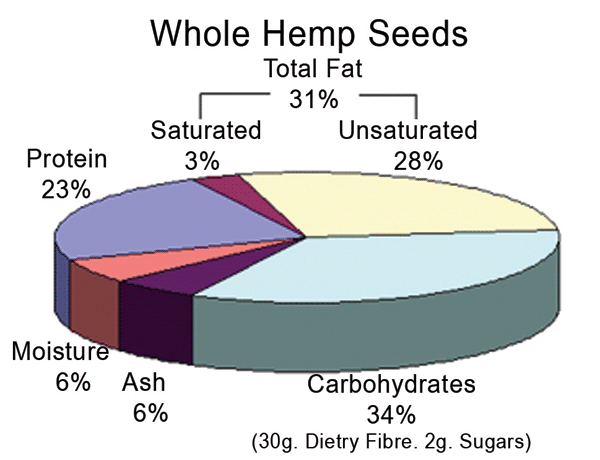
Conclusions
Hemp seed is an excellent source of nutrition. Indications from traditional Chinese medicine, recent anecdotal reports and modern human clinical trials agree that hemp seed has health promoting properties that are supported by results from nutritional analyses of the seed, oil and seed meal. In particular, the healing properties of hemp seed can be attributed to high levels of EFAs and other PUFAs in the oil, in addition to a rich source of important amino acids in an easily digested protein.
Recent feeding trials with fish, hens and ruminants, in addition to empirical observations over thousands of years, have effectively demonstrated that hemp seed and its derivatives are useful in animal feed as well. Subjective concerns over THC in hemp foods are not supported by scientific evidence.
Hemp seed as a nutritional resource: An overview
J.C. Callaway
Department of Pharmaceutical Chemistry, University of Kuopio, FIN-70211 Kuopio, Finland;
(e-mail: )
——————–




